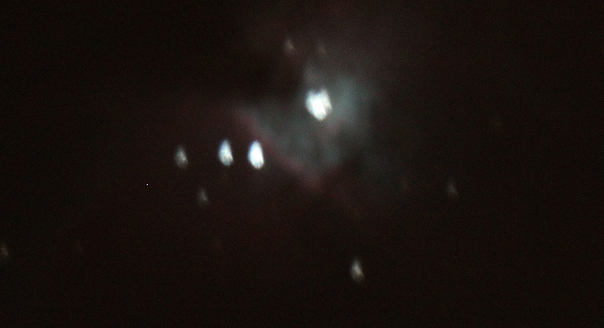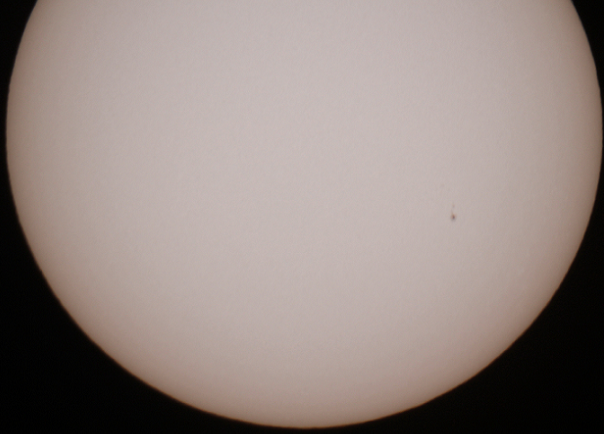Despite feeling a bit ill, last night I ventured outdoors to try and take a few starry night photographs with my camera. It took a little fiddling, but the quality improved dramatically over the course of the evening.
Here’s my best photo of the orion nebula (around the middle star in Orion’s dagger)

This was taken with a 15 second exposure through my 8″ telescope. My telescope has tracking, so there isn’t any crazy star shift going on, but I think I didn’t quite have it aligned North/South so the stars fall a little bit in the image. I also had to set a timer for the camera, because just touching the camera button was enough to introduce dramatic shake into the image.
What impresses me most is the color.

I’ve always been annoyed by deep space photography because of its false color. A scientist may decide, for example, to color a picture according to its temperature because it’s far more interesting than if you used the natural light image which, frankly, would probably be pretty boring.
Unfortunately, this had me thinking that the night sky wouldn’t be too exciting without photoshop. Thankfully, I was proven wrong. And while I hope I’ll be able to improve the focus and the shake next time around, I’m quite pleased with today’s results.
